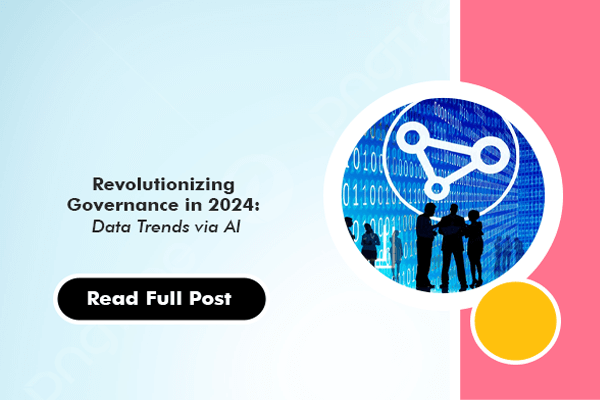In 2024, the landscape of Indian governance is undergoing a profound change which is driven by the convergence of data and information. The journey of effective policy-making has often been met with challenges. The Indian government is increasingly recognizing the power of data-driven decision-making for enhancing policy formulation and improving public services.
Developing a revolutionary strategy helps in reshaping the way the government collects, analyses, and utilizes data.
Power of Data in Government
Traditionally, policymaking was based on intuition, past experiences, and limited data samples. This fragmented decision-making process has hindered the progress of the nation as this approach lacked real-time insights and led to inefficient and unrealistic outcomes.
Despite the intricate challenges, we brought a promising development with Niti Aayog, the Indian government’s key policy think tank that has established a state-of-the-art experience room with a high-tech, interactive platform for data visualization, analysis, and reporting.
This included setting up 40 large screens, displaying an array of comprehensive data, reports, analytics, graphs, and comparisons providing information across different sectors.
With AI, the solution helps in automating the data processing, analysis, and converting into intuitive formats for streamlining the data conversion and ensuring a smooth user experience.
AI-powered Data Integration and Conversion
- By integrating AI algorithms in the software, large volumes of data spanning in different levels, states, districts, and blocks were processed, cleaned, and accumulated, transforming into a consistent structure suitable for further analysis and visualization.
- AI-powered tools were also used to identify data patterns, detect anomalies, and ensure accuracy. With this approach, complex datasets were converted into formats that are suitable for graphical representation and help policymakers make decisions with proper precision.
- Machine learning technology was also used for categorizing and classifying data allowing users to generate detailed analyses based on the queries. This further ensured that the system could handle a wide range of queries with precision and speed.
Advanced Data Visualization and Analytics
- Policymakers can explore complex data at any level of granularity on screens. Based on the user input, these AI-driven systems can automatically adjust visualization thus providing an interactive and dynamic experience.
- The software also holds the ability to respond to complex queries and generate appropriate visualizations.
Interactive User Experience with LLM
Another significant feature of the experience room is AI-based voice chatbot. This component enables users to interact with software using simple natural language. The system is optimized to process not only simple requests but also complex analysis queries such as finding insights, suggestions, recommendations, answering questions and more. Additionally, it simplifies the process for policymakers to access pertinent information without navigating complex interfaces or learning any new commands.
The software also helps in identifying the gap of various sectors with real-time data visualization enabling policymakers and stakeholders to interact with complex data in an intuitive and engaging manner, thus making it more accessible for making well-analyzed decisions. This helps users delve into specific metrics like data points, generate forecasts, and perform comparative analyses by conversing with AI.
The initiative aligns seamlessly with the nation’s aspirations for rapid development and effective governance. It embodies India’s commitment to leveraging technology and data to drive sustainable growth and development on the global stage.
This advanced visualization software exemplifies the fusion of art and science, offering dynamic, static, and interactive visualizations tailored to the specific needs of policymakers.
Conclusion
Data-driven decision-making process revolutionizes policymaking by providing evidence-based insights to combat socio-economic challenges and narrowing the industry gap.Rather than depending on anecdotal evidence, policymakers can now leverage real-time data to grasp trends, evaluate emerging issues, and assess the effectiveness of current policies.
With each decision supported by real-time data insights, the future of Indian governance shines brighter than ever before.




